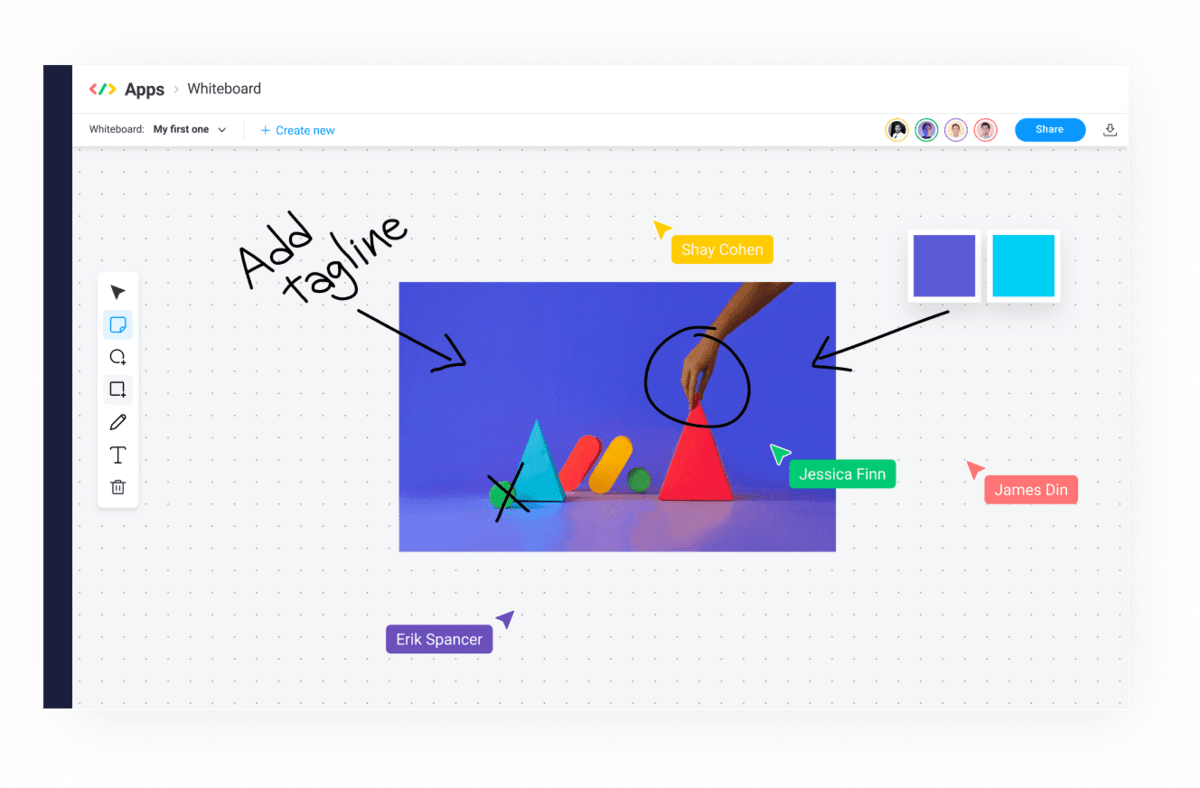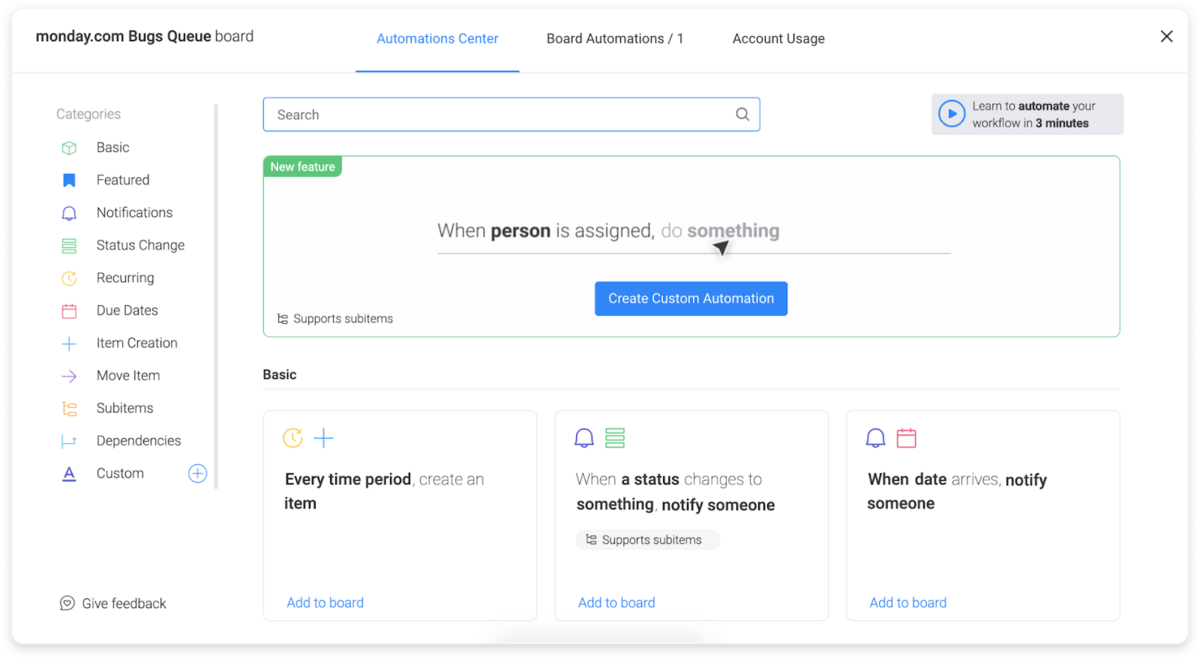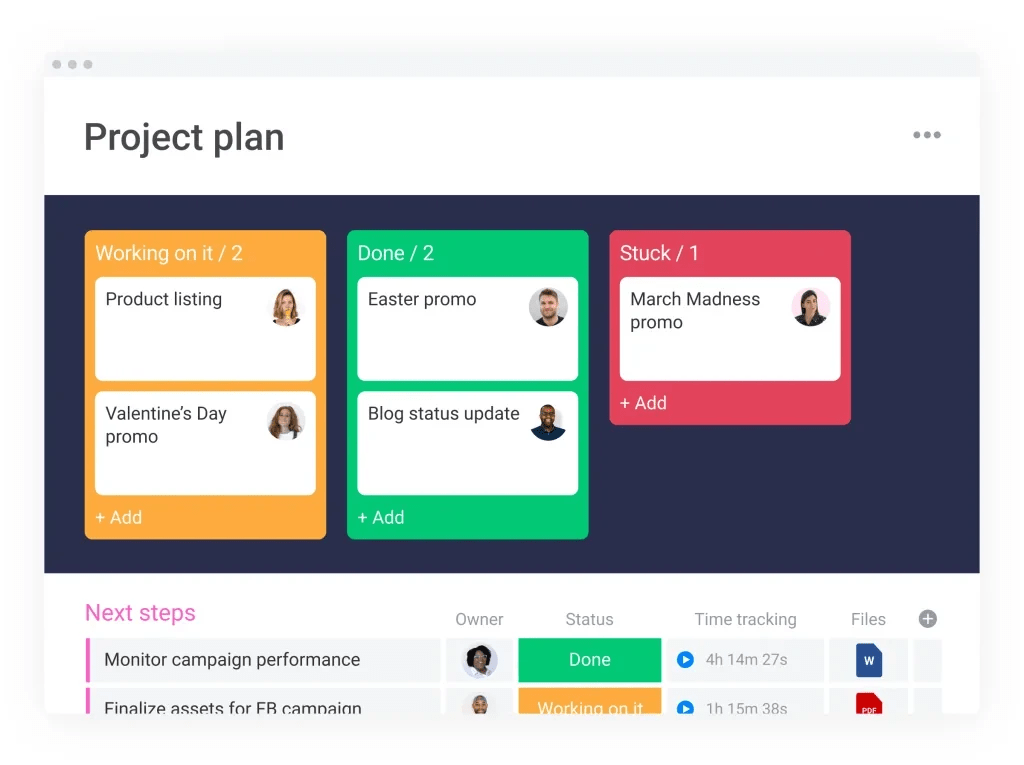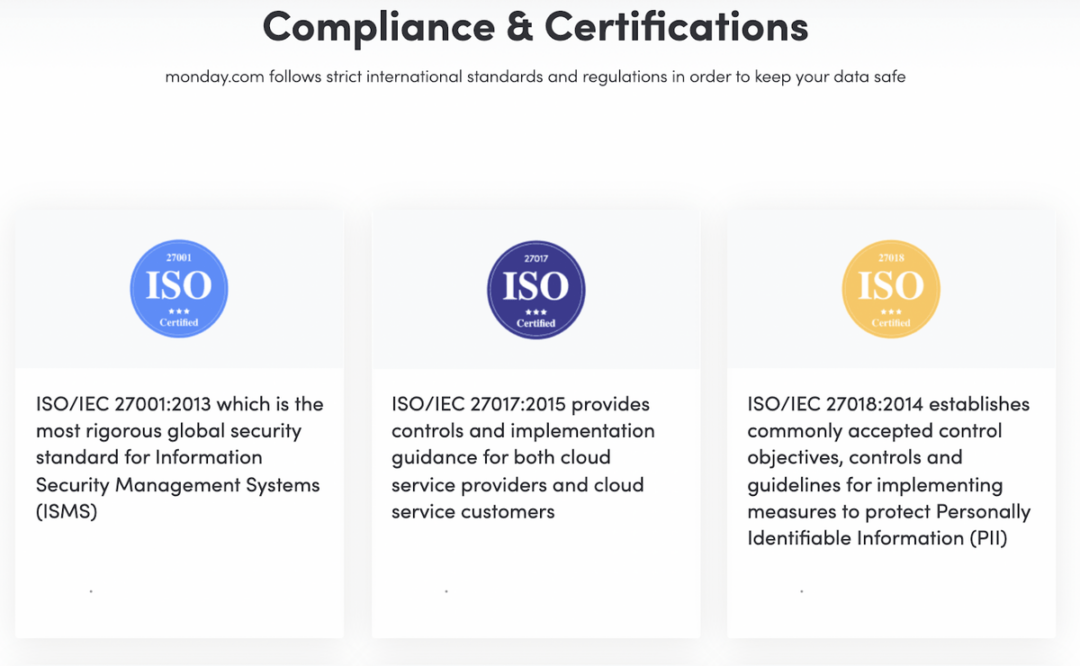How digital platforms are changing the way we work
Blog: Monday Project Management Blog
Digital platforms are on the rise. There are over 3.78 billion social media users — nearly 50% of the world’s population.
And social platforms, such as Facebook or Instagram, are only one of several different types of digital platforms.
We’ve become used to digital platforms dominating the way we consume news, influencing our purchasing habits, and providing our entertainment. But are they really changing the way we get work done?
In this article, we’ll chart the history of digital platforms, look at the benefits digital platforms bring, and look at how their features can improve the way we work.
What are digital platforms?
Outside of the customer relationship, it also includes the community of other users that engage with the platform.
Typical use cases include:
- Social media and media-sharing platforms, like Instagram or YouTube
- Knowledge platforms, such as Quora or Reddit
- Service-orientated platforms, like Airbnb
- Ecommerce platforms, like Alibaba
Now digital platforms and tools are increasingly being seen in the workplace to encourage collaboration, build efficiency, and ensure seamless information and knowledge sharing.
Evolution of digital transformation in the workplace
The evolution of digital transformation in the workplace began in the 1950s with the introduction of the telephone and typewriter to offices.
Manual word processors, printers and fax machines, and the ethernet followed in the 1960s and 1970s, changing the way work was produced, shared, and stored.
Innovation continued in digital technology. The 1980s and 1990s took things portable and global with the arrival of mobile phones, personal computers, and the worldwide web.
As a new millennium began, information sharing and communication changed significantly with the introduction of Google search, the first social media platforms, and collaboration tools such as Skype.
Over the last year, the pace of digital transformation has been rapid as the workplace evolved to keep up with the challenges of COVID-19.
The growth of the digital platform market means Zoom culture, AI, machine learning, and cloud computing now significantly influence the way we work.
What do digital platforms bring to the way we work?
There are several benefits to using digital platforms in the workplace, including:
- Rapid and personalized response. Digital platforms enable you to quickly respond to customer requirements and feedback. For example, say a customer calls your customer service department frustrated by a tech problem with a product.
Your company uses an integrated digital customer relationship management system that shares customer data between departments.
This means your technical support department can return their call the same day and have full access to details about the complaint, which improves the customer’s experience because they don’t have to repeat the details.
- Improved security. Modern digital platforms have layers of security built in to prevent customer, company, or employee data from being lost.
For example, over at monday.com, we follow strict international regulations to keep your information safe, including ISO/IEC 27001:2013 and ISO/IEC 27018:2014.

Previously, securing data meant a large storage footprint with files kept under lock and key. This was less reliable and came at an increased cost.
Permissions can also be set up within digital platforms to restrict access to certain confidential information, and version history can be used to track when data has been accessed or changed — and by whom.
- The ability to work at scale. Historically, companies were often limited to the customer pool they could access and serve.
Bricks and mortar stores could only reach local markets, whereas e-commerce platforms can now serve millions of customers worldwide.
Marketing efforts looked significantly different.
The opportunity to leverage customers’ fear of missing out was restricted to school kids spotting their friend’s new toy in the playground and wanting the same one.
Now, influencer partnerships offer a competitive advantage and inspire FOMO purchases on an almost daily basis.
- Global reach. Digital platforms mean we can work wherever, whenever we want.
Operations can be set up in countries where infrastructure, labor, or logistics are cheaper in order to boost overall revenue. Teams can collaborate on shared projects from their offices, whether in Sydney or Seattle.
And online platforms mean that companies can serve their customers effectively from a distance and reach new customers in global markets.
6 features of effective digital platforms for the workplace
Hopefully, you’re now convinced of the benefits of digital platforms for your workplace. So, if you’re considering adopting one, what should you be looking for from digital platform providers?
Like any tool, you should always look for the option that meets the needs of your particular business, strategy, and operating model, but here are 6 features we think are essential across the board.
1. Seamless task and information management
A core benefit of successful digital platforms is their ability to reduce silo working through enabling effective task management and sharing of information.
Look for a platform that makes it easy to view, share, amend, and store documents and other data sources. It should be simple to assign work and monitor task progress while also tracking resource capacity and capability.
The ability to securely share customer data across a digital ecosystem provides the seamless user experience customers expect.
Looping other departments in on lessons learned during projects or process optimizations builds organizational learning and improves productivity.
monday.com’s drag-and-drop functionality makes assigning tasks easy, while its workload management feature allows you to keep a close eye on resource capacity.

It’s easy to share data between teams and set permissions to ensure the right people access the right information.
2. Collaboration features
If you’re going to take advantage of the global reach and scalability that digital platforms can bring, you’ll need the ability to collaborate wherever your partners are located.
Even if you’re all based at the same location, the rise in flexible working options makes collaboration features that allow you to work with others remotely and on mobile platforms important.
In monday.com, it’s simple to collaborate within cross-functional teams or with colleagues working remotely, nationally, or internationally.
By working within a single, shared platform, communication happens in context, so you’re never missing any pieces.
Additional tools, like the monday.com digital Whiteboard feature, allow for idea generation and sharing as easily as if you’re in the same room.

Plus, integrations with your favorite communication apps mean you don’t have to stop using what already works for you.
3. Integrations
Integrations help you streamline your work, sync your data, and align your digital tools. Which saves you effort and ensures your platform acts as a single source of truth for your entire team.
The opportunities for integration should extend beyond collaboration tools. For example, look for integrations that help centralize your entire sales pipeline or increase your project management capabilities.
monday.com has over 40 native integrations, plus get access to over 3,000 more through Zapier.
4. Automation
Automation allows you to take repetitive or mundane tasks off your plate, freeing you up to concentrate on things that add value.
Through simple “if that, then this” recipes, you can automate a variety of different activities to happen in the background.
For example, you can set up an automation to assign a task to a different owner when it changes status. Or set an alert to automatically flag when a task due date is passed.

Automations in monday.com help you put administrative tasks on auto-pilot. We’ve got a range of pre-made automations, or you can create your perfect automation to increase efficiencies in your workflows.
5. Process optimization tools
Digital platforms are meant to allow you to get work done more efficiently.
The best digital platforms have a range of process optimization tools that remove blockages that are wasting time and effort.
When you’re looking for a digital solution, make sure it has several different ways to view your data and workflows.
This visibility makes it easy to spot where bottlenecks are occurring and take action to remove them.
Plus, as everyone can see the end-to-end process, you crowd-source suggestions for its improvement from the people who know it best.
Here at monday.com, we’ve got over 8 different ways to view your workflows, so it’s easy to see if things are getting stuck.
You can easily rearrange tasks and processes to make them flow better and @tag other stakeholders for their input or feedback.

Digital platforms, by definition, engage with a community of users, including customers, suppliers, employees, and partners.
This means they offer an excellent opportunity to seek feedback from a wide range of people about anything that’s clunky in your processes and take action to make it better.
6. Customization
Whichever digital platform you choose to adopt, it’s unlikely it’ll fit everything you want it to do right off the shelf.
The ability to create customized workflows that match how you and your team like to work is essential — your platform should be working for you, not against you.
Here at monday.com, we know that no one size fits all.
From the way you organize work to the way you view your data, everything is fully customizable, so it supports the way you want to get things done.
What is a Work OS?
A Work OS is a shared platform that lets you plan, execute, monitor, and lead work all in one place.
Key capabilities of a Work OS include:
- A suite of functional building blocks that allow your team to create customized workflows that suit the way they work
- Automations to streamline mundane or repetitive tasks
- Multiple data visualization options, so it’s always simple to view your team’s progress and analytics
- Integrations with other tools you already use to get work done
- Decentralized data so anyone with the correct permissions can view, share, or modify information
- The ability for teams to work autonomously while benefiting from enterprise-level process optimization
Looking at these capabilities, the benefits that a Work OS can bring to your business are clear. But, digital transformation and the adoption of digital platforms aren’t necessarily easy.
It’s not just a case of introducing a new system to your workplace — there’ll also need to be procedural and cultural changes.
After all, digital platforms fundamentally change the way that work gets done.
That’s why choosing the right tool is so vital and why we think the monday.com Work OS stands out as the platform of choice.
Bring digital platforms to your workplace
After the recent pandemic, the way we work will never look the same. Digital transformation is on the rise, and businesses are racing to adopt the strategies, processes, and technology to keep up.
In this article, we’ve explored the rise of digital platforms in the workplace, the benefits they bring, and the core features of effective digital platforms.
monday.com is an open-source Work OS that allows you and your team to design, build, or customize the workflows you need to get things done faster and with more agility.
It offers the perfect digital platform to transform your workplace. Why not start by streamlining your sales pipeline with our CRM template?
Get started with monday.com today.
The post How digital platforms are changing the way we work appeared first on monday.com Blog.
Leave a Comment
You must be logged in to post a comment.








